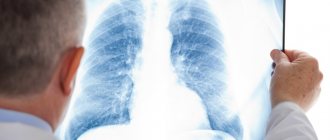Why is pressure inside the skull needed, why can it be elevated, and how does this indicator relate to blood pressure? What are the norms and when is blood pressure dangerous to health and life, how to feel it and how to reduce it, let's talk with an expert ALENA PARETSKAYA
Pathophysiologist, immunologist, WHO expert POLINA PETROSYAN Neurologist at SM-Clinic, specialist in cerebrovascular diseases and headaches
What is intracranial pressure
The brain is surrounded by a fluid called cerebrospinal fluid, which nourishes and protects nerve cells.
Cerebrospinal fluid is continuously produced and flows away from the skull, thereby maintaining a constant pressure. This is intracranial pressure - a certain force that puts pressure on the brain and the walls of the skull. This pressure is changed in mmHg. Art., and normally it is from 10 to 15 mm. If it is higher, this is a reason to be wary, and if the pressure exceeds 25 mm Hg. Art., this can be dangerous for brain function. If the value is more than 35 mmHg. Art. Severe and irreversible changes in the brain are possible - such situations are considered critical.
Measurement principles
The principles of measuring intracranial pressure differ significantly from measuring blood pressure. To date, there are no devices for quickly measuring ICP. Since the structural elements located in the cranium occupy a certain volume of the cranial cavity, determined by its parameters, therefore it cannot change. Due to the fact that the volume of the cranial cavity cannot be changed, the ratio of brain structures is constant.
Measuring intracranial pressure is difficult because there are not enough indirect parameters by which to determine the pressure in the cranium. Depending on the diagnosis, age and functional state of the body, visual examination methods or modern research methods are used to diagnose patients, which make it possible to use equipment to determine the reasons that provoked changes in brain pressure. Invasive techniques through surgery are used to establish clear pressure values.
Causes of intracranial pressure in adults
Increased intracranial pressure (ICP) is not an independent disease, but a syndrome.
Doctors sometimes call it intracranial hypertension. Pressure inside the brain (similar to arterial pressure) fluctuates when the head is tilted back and forth or to the sides, during physical activity or sneezing. But it can increase to serious numbers in case of pathologies, and there are many of them. “ICP (intracranial pressure) occurs as a result of an increase in the volume of intracranial contents (cerebrospinal fluid or cerebrospinal fluid), tissue fluid, or the appearance of foreign tissue (tumors, cysts, brain abscess), says neurologist Polina Petrosyan.
In addition, the causes of increased ICP may be:
- traumatic brain injury;
- tumor;
- intracerebral hemorrhage;
- neuroinfections (encephalitis, meningitis).
“The cause may also be long-term use of drugs from the group of hormonal contraceptives, corticosteroids or antibiotics,” adds Dr. Polina Petrosyan.
Pressure increases because fluid is either produced in excess (for example, due to an infection that has spread to the brain or its membranes), or because fluid flows out of the skull through special pathways less easily. If volumetric processes develop in the cranial cavity (for example, a tumor grows or hemorrhage occurs), there will be less space for fluid, and its pressure will also increase.
Reviews
Larisa, 36 years old: My son was diagnosed with increased intracranial pressure at the age of 14. Before this, he had not made any special complaints, except for headaches, but I thought that this was an age-related problem and would go away on its own. After the examination, the doctor prescribed a course of general massage, Furosemide, Cavinton and Pantogam tablets. After just two weeks, my son began to feel better; in a year he needs to take another course.
Svetlana, 46 years old: My intracranial pressure increased after severe stress when my husband got sick. I had a severe headache, blood vessels in my eyeballs burst, and one eye hurt unbearably. The neurologist prescribed me Actovegin injections, Veroshpiron tablets and physiotherapy - electrophoresis with magnesia. After a week I felt better and didn’t go to the doctor again. But now, in every situation when I worry, I feel the familiar pain in my head. Apparently, one course was not enough, I am going to see a neurologist again.
Anton, 24 years old: I have been boxing since I was a teenager, and in another fight I received a severe head injury. After an MRI, I was diagnosed with increased ICP. I take pills, go for massages and swimming, try to rest more and not be nervous, because I want to return to sports again. So far the doctor says that the injury was severe and another 2-3 courses of treatment are needed every three months. I hope that ICP is not a death sentence and I can make a full recovery.
Symptoms of intracranial pressure in adults
In many cases, a slight increase in ICP may not manifest itself for a long time. If the pressure rises sharply or high enough, the following symptoms may occur:
- headache - it can be pressing or bursting, usually occurs in the morning, this pain has no clear localization, it can be felt in different parts of the skull;
- nausea and vomiting - they usually occur at the peak of the headache;
- drowsiness, malaise, general poor health;
- memory impairment (forgetfulness), attention disorders, problems with thinking;
- changes in the autonomic nervous system – surges in blood pressure, slow pulse, increased sweating;
- visual impairment up to complete blindness.
Symptoms may come on suddenly or develop gradually over weeks or months.
Signs of pathology
Changes in intracranial pressure affect the general condition of the patient. This is often preceded by injuries or blows to the head, complications during childbirth, and diseases of the meninges. In this case, the patient cannot lead a normal lifestyle, and the symptoms of increased or decreased ICP are not relieved by taking medications. Such patients are treated in a hospital setting. It is also impossible not to notice pathological changes in this indicator in children. In addition, in the absence of a reason, the pressure cannot increase or decrease and stop at a critical level for the child - serious reasons are required for this.
The physiological basis of painful sensations with an increase or decrease in pressure, as well as other symptoms, is an insufficient supply of blood to the brain and various disorders of its circulation. If fluid is retained in the vessels and cerebral ventricles, the tissues are under constant pressure, which can provoke gradual necrosis (death) of cells. Hypoxia (insufficient oxygen supply) and nutrient deficiency are also observed - this causes disturbances in brain activity or loss of reflexes, depending on the location of the damaged area of brain tissue.
With high blood pressure
High blood pressure is manifested by a pronounced set of symptoms that affect all vital processes. They may be combined with additional clinical signs characteristic of a particular disease. The symptom complex indicating increased ICP includes:
- painful sensations in the head, which are pressing in nature and spread to all areas, often occur immediately after waking up and intensify during the day;
- sleep disorders, insomnia;
- ineffectiveness of standard drugs against headaches;
- nausea and vomiting, decreased heart rate;
- a sharp decrease in vision, inability to focus on small objects for a long time, deterioration of memory and concentration.
For headaches that occur as a result of serious pathologies of intracranial pressure, the patient remains in bed. During physical activity, attacks of dizziness, loss of consciousness, and memory loss may occur. Also, peripheral vision disorders periodically appear, the appearance of dark spots and “floaters” in the field of vision is a consequence of permanent fluid pressure on the optic nerve. With exacerbation, the situation worsens, normal reflex responses to stimuli may partially disappear.
In children, behavioral problems and hyperactivity are often associated with increased intracranial pressure. However, these diagnoses may not be related. Increased ICP in infants is indicated by symptoms such as bulging fontanel, rapid increase in head circumference, and divergence of the bones of the skull. Another alarming symptom is the overgrowth of the fontanel too slowly. If these signs appear in combination with general apathy or excitability, poor sleep, lack of innate reflexes, this may indicate pathological fluid pressure inside the skull.
At low pressure
Reduced intracranial pressure can also be determined by clinical signs. The symptoms are not as pronounced as when this indicator increases, but also affect the patient’s well-being and performance. If the pressure inside the skull is not normal, this leads to the following consequences:
- headaches, which are especially worse when raising the head;
- frequent mood swings, lethargy, apathy, irritability;
- simultaneous decrease in blood pressure if the syndrome is caused by a general lack of fluid in the body;
- headaches, dizziness, fainting may occur after minor physical exertion;
- decreased visual acuity, appearance of dark spots before the eyes;
- nausea, abdominal pain;
- Possible pain in the heart area that spreads to the chest.
First aid for a sharp decrease in intracranial pressure is to take the correct position. Lying on your back with your head down makes the outflow of fluid difficult, so the pressure is partially restored. This factor may also have diagnostic significance - when you raise your head and sit or stand, the pain intensifies, and lying on your back it decreases slightly.
Diagnostics
It is extremely difficult to suspect an increase in ICP based on external signs.
The doctor must know all the complaints and those facts from life that preceded the symptoms. This could be a hypertensive crisis, head injury, severe infection, kidney or liver problems. In order to confirm the diagnosis, the doctor will prescribe a number of studies to the patient: CT or MRI of the brain to evaluate the structure of all tissues of the skull, note the condition of the ventricles of the brain where cerebrospinal fluid accumulates;
- echoencephaloscopy to determine brain function;
- Ultrasound of the brain (mainly in children through the fontanelle);
- examination of the condition of the fundus by an ophthalmologist;
- spinal cord puncture with measurement of the pressure of the escaping cerebrospinal fluid (the cerebrospinal fluid itself is taken for analysis).
Which doctor should I contact?
If symptoms of liquor-hypertensive syndrome appear, you should contact a neurologist. An experienced specialist can be seen at the medical office by appointment. You can make an appointment by phone @. The doctor will see you at a time convenient for the patient.
The neurologist from the SmartMed clinic has many years of experience in treating noise in the head of various origins, including those caused by intracranial hypertension. To determine the cause of poor health, the doctor will conduct a visual examination.
The examination begins with a study of the patient's complaints and neurological testing. It is important for the doctor to know the person’s medical history, conditions of occurrence, frequency and intensity of noise in the head.
Increased VChP cannot be determined by external signs
The doctor must prescribe instrumental research methods:
- Spinal or lumbar puncture. Designed not only for studying cerebrospinal fluid, but also for measuring intracranial pressure. The procedure is invasive and involves inserting a puncture needle into the spinal canal and then connecting a pressure gauge.
- MRI of the head. Allows you to identify the causes and signs of intracranial hypertension: cerebral edema, vascular thrombosis, enlargement or narrowing of the cerebral ventricles, cysts, tumors, hematomas, hemorrhages. The study is the most informative and safe. In medical MRI of the head, it is carried out on a new ultra-precise Siemens Symphony 1.5 Tesla tomograph, thanks to which it is possible to obtain a highly accurate 3D image. The examination takes no more than 15 minutes, no special preparation is required.
- Ultrasound of the head. Used for children of the first year of life. The study is carried out through an open fontanel.
- Ultrasound of the vessels supplying the brain. Allows you to assess the condition of the arteries, as well as the direction, speed and intensity of blood flow in them, to identify the main vascular disorders that can cause high ICP and noise in the head.
- Electroencephalography. Designed to study the electrical activity of the brain, it allows you to identify areas of irritation of various brain structures.
Additionally, the neurologist may prescribe a consultation with an ophthalmologist. Papilledema, which can be detected during fundus examination, is a sure sign of increased ICP. If necessary, other highly specialized specialists are involved in the examination: a neurosurgeon, an oncologist.
Important! The reliability of the examination for intracranial pressure depends on the technical parameters of the diagnostic equipment and the qualifications of the diagnostician.
Modern methods of treatment
In some cases, the patient does not require treatment; he is observed and treated for the underlying disease, which caused the increase in ICP.
If it is necessary to treat pathology, two approaches are used - conservative and surgical.
Conservative interventions are carried out for those patients whose ICP elevation is chronic and there is no significant deterioration of the condition over time. The basis of treatment is drugs that have a diuretic effect, which reduce the volume of fluid in the head. The specific medicine is determined by the level of pressure and the situation. In severe and acute processes, osmotic diuretics (mannitol) are used, in chronic cases - furosemide, hydrochlorothiazide, spironalactone. While taking them, you need to drink a potassium preparation - Asparkam, Potassium orotate, Panangin.
Surgical methods for treating increased ICP depend on the stage and severity of the disease. In acute situations, craniotomy is performed to reduce fluid pressure on the brain and drain excess fluid. Special shunts (tubes) are installed as planned, which drain fluid from the brain into the abdominal cavity.
Invasive methods for monitoring ICP
To accurately diagnose cerebral hypertension, invasive methods are used; they are carried out through surgery, when a special sensor is inserted into the cranial cavity through a burr hole. The procedure is carried out in a hospital equipped with the necessary equipment. During the examination, there is a high risk of injury to the brain and spinal cord, so this method is used in extreme situations that require immediate confirmation of the diagnosis.
You can measure cerebral pressure using an invasive method if you have the following indications:
- intracranial hemorrhage;
- stroke;
- hydrocephalus;
- meningitis of an infectious nature;
- posthypoxic encephalopathy.
Important! Thanks to cerebral pressure monitoring, it is possible to coordinate perfusion pressure, which reflects the effectiveness of cerebral hemodynamics, and also makes it possible to evaluate the results of decongestant therapy.
Depending on the location of the drainage system, indicators are measured using the following techniques:
- intraventricular;
- intraparenchymal;
- subdural;
- subarachnoid.
Intraventricular technique
The earliest method of cranial pressure control. The main advantage is the possibility of drainage of cerebrospinal fluid and direct endolumbar administration of medications.
External ventricular drainage
The procedure for measuring ventricular pressure is carried out using a strain gauge. The technique is easy to interpret the results and does not require the use of expensive equipment. This procedure is not only diagnostic, but also therapeutic, since it allows you to control cranial pressure by draining the cerebrospinal fluid.
Parenchema method
During the study, the sensor is installed through the trefination hole in the parenchyma of the medulla to a depth of no more than 2.5 cm. This method is preferable, since the data obtained during the study are more consistent with the readings of intraventricular pressure.
Epidural technique
Direct technique for monitoring ICP using sensors. The technique is based on the introduction of special devices into the cerebral ventricles, which make it possible to measure cerebral pressure values to set accurate pressure.
The following examination systems are used:
- Microsensory. The tensor apparatus is introduced into the required brain area, after which the information converted into electrical signals is reflected on the monitor.
- Fiber optic. Additionally, a drainage system is connected, which allows a moderate reduction in cerebral pressure values.
- Pneumatic. A catheter with a latex balloon filled with air is installed.
Prevention of intracranial pressure in adults at home
Prevention of increased ICP is the prevention of various diseases affecting the cranial cavity.
This includes protection against infections that can affect the brain - vaccination against meningococcal and hemophilus influenzae infections, influenza vaccination. It is also necessary to treat various pathologies that can affect brain function. General recommendations are simple:
- follow a daily routine and lead the healthiest lifestyle possible;
- avoid head injuries;
- protect yourself from stress and nervous overload;
- Get enough sleep.
Monitoring the effectiveness of treatment
After surgical treatment, it is important for doctors to assess the state of the central nervous system and determine the likelihood of relapse. To monitor the quality of treatment, hardware diagnostics - MRI - are also used. It is absolutely safe to carry out such screening several times in a row, since during the examination the body is not exposed to x-ray radiation. The magnetic fields produced by the MR installation do not have a destructive effect on the body.
The scan can be performed in any medical institution that has the necessary technical facilities and trained functional radiologists. In Moscow, hundreds of diagnostic centers located in every district of the city receive services. To quickly find the nearest MRI medical facility, you can use a single city service.
When you click on the link, a search page will open where you can select a diagnostic service and the area where the clinic is located. In response to the request, a complete list of medical institutions will appear, distributed by rating and prices for procedures. Study the information, read reviews, mark the best offers. To make an appointment for a tomography, just call the phone number listed on each page of the site. All service guests who have booked a scanning time through the portal receive a guaranteed discount of 1,000 rubles on any type of diagnosis.
Lumbar puncture
If hardware diagnostics do not help identify the cause of the disease, the neurologist prescribes a lumbar puncture - a lumbar puncture. It is an invasive procedure performed to obtain a sample of cerebrospinal fluid. The procedure can be performed for diagnostic and therapeutic purposes. During diagnosis, a lumbar puncture helps to more accurately determine the degree of pressure increase. For therapeutic purposes, the procedure is performed for benign intracranial hypertension to improve the patient’s condition.
Benign intracranial hypertension (BIH)
This is one of the types of ICP, which can be attributed to a temporary phenomenon that is caused by a number of unfavorable factors. The condition of benign intracranial hypertension is reversible and does not pose a serious danger, since in this case the compression of the brain does not occur due to the influence of any foreign body.
The following factors can cause ADHD:
- Hyperparathyroidism;
- Disruptions in the menstrual cycle;
- Discontinuation of certain medications;
- Hypovitaminosis;
- Obesity;
- Pregnancy;
- Overdose of vitamin A, etc.
Benign intracranial hypertension is associated with impaired absorption or outflow of cerebrospinal fluid. Patients complain of headaches that get worse with movement, and sometimes even with sneezing or coughing. The main difference between the disease and classic cerebral hypertension is that the patient does not show any signs of depression of consciousness, and the condition itself does not have any consequences and does not require special treatment. [adsen]
Preparations containing amino acids
Preparations with amino acids help not only reduce intracranial pressure, but also accelerate the production of vital enzymes and reduce the load on the brain. These drugs include Glycine - it improves metabolic processes (metabolism in tissues), has an unexpressed sedative and hypnotic effect, and makes memory sharper.
When should you take Glycine:
- in stressful and conflict situations;
- with decreased concentration, attention and performance;
- during the recovery period after a head and brain injury;
- when under difficult conditions of physical and mental labor.
To improve brain function and get rid of regular headaches, the doctor can prescribe the drugs Cerebrolysin and Citrulline simultaneously with Glycine
ICH treatment tactics
When ICH syndrome is detected, therapy is carried out under medical supervision. The need for inpatient treatment is due to the fact that intracranial hypertension is not an autonomous disease, but acts as a sign of another pathological process (hydrocephalus or encephalopathy). Therefore, doctors need to find the root cause of this abnormality.
Therapy of intracranial hypertension in one-year-old children is carried out using several methods, based on the severity of the pathology.
For mild to moderate severity of the disease, non-drug and drug therapy is practiced:
- With a non-drug approach, it is recommended: diet, massage, physiotherapy, therapeutic exercises.
- With regular surges in intracranial pressure, medications are prescribed whose action is aimed at stopping the etiological factor. Additionally, one or more types of diuretics are prescribed.
At the same time, a number of therapeutic measures are carried out to significantly improve the baby’s well-being and prevent the development of complications.
Drastic treatment methods are also practiced in advanced stages of intracranial hypotension or the presence of a malignant focus, when the use of conservative measures is no longer advisable.
Clinical picture (symptoms)
With arterial hypertension, the manifestations are different and depend on the severity. With moderate high blood pressure, there may be no symptoms, but rarely the child experiences headaches, fatigue, and excessive irritability. A significant increase in blood pressure is accompanied by:
- anxiety;
- unmotivated crying;
- apnea attacks;
- shortness of breath.
Pulmonary hypertension manifests itself:
- heavy breathing of the child;
- retracting the pliable parts of the chest while inhaling;
- reduced saturation (saturation of hemoglobin with oxygen);
- cyanosis of the skin and mucous membranes.
With increased pressure in the pulmonary arteries, the child’s response to oxygen therapy is practically absent, which is why the procedure is ineffective.
Among the clinical manifestations of intracranial high pressure :
- decreased sucking activity;
- tense, swollen fontanelles that lack pulsation;
- dilated superficial veins of the head area;
- unmotivated crying, screaming;
- convulsions;
- divergent cranial sutures;
- damage to the cranial nerves, which is accompanied by impaired motor functions of the eyeball, sense of smell, work of the cervical, facial and trapezius muscles, heart, gastrointestinal tract and many other systems.
Also, the newborn develops Graefe syndrome, in which part of the sclera can be seen at the top of the eyeball. The phenomenon is observed only when the child’s eyes are downcast.
Reasons for the development of the pathological condition
Among the main reasons for the development of the pathological process, doctors name:
- Heredity.
- Somatic pathologies.
- Exchange disorders.
Manifestation of headache
| Organs and systems | Nature of pathological processes |
| Kidneys | |
| CNS | |
| Heart and circulatory system | |
| Endocrine system | |
| Other anomalies |
Factors for the development of ICH
The main provocateur of intracranial pathology is the improper movement of fluid that is produced by the ventricles of the brain.
An episodic jump in ICP can also occur in a completely healthy baby for physiological reasons, for example, during the period of crying or breastfeeding, which is explained by physical and mental stress at this moment.
If it is impossible to determine the provoking factor of the painful condition, doctors diagnose the baby with a congenital pathology - intracranial hypertension of the idiopathic type.
Causes of pulmonary hypertension
Pulmonary hypertension in infants of the persistent type is diagnosed in babies born on time or post-term.
- Intracranial pressure in infants: symptoms, dangers, how to treat
Main reasons for development:
- Hypoxia or suffocation during the perinatal period of the fetus.
- Meconium staining of amniotic fluid.
- Penetration of original feces into the trachea.
- Respiratory distress syndrome.
- Closure of the foramen rotundum or arterial canal.
- Underdevelopment of the entire lung structure.
- Diaphragmatic hernia of intrauterine nature.
- Pneumonia of newborns (neonatal sepsis).










